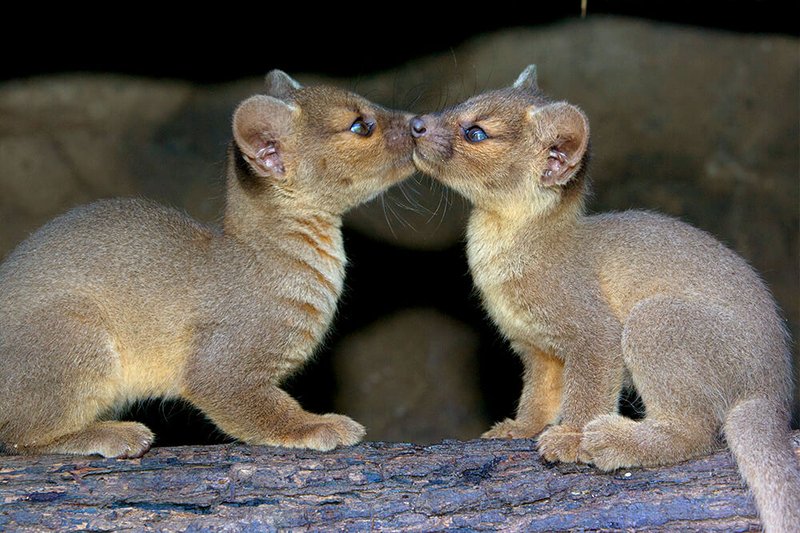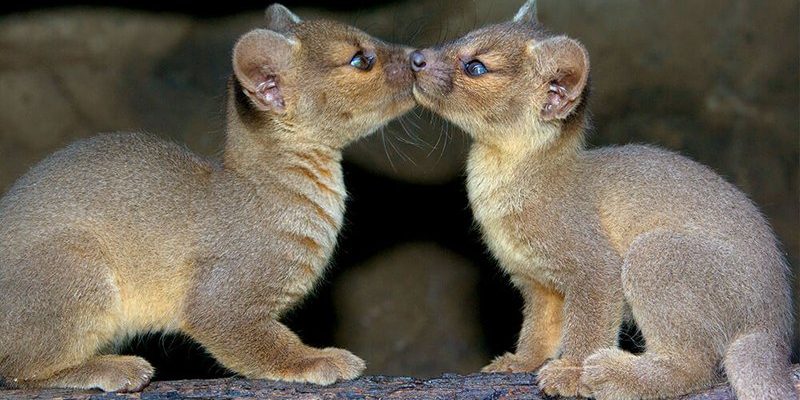
Fossas are unusual animals, and understanding their reproductive and nurturing habits can give us insight into their role in Madagascar’s ecosystem. They face challenges in raising their young, from finding food to protecting them from predators. Thankfully, they have some pretty clever strategies. So, grab your favorite mug, and let’s explore how these marvelous creatures raise their little ones in the heart of Madagascar.
The Life Cycle of a Fossa
Fossas start their lives in a rather curious way, just like many mammals. They reach sexual maturity at around two to three years old, usually in the dry season when food is more available and conditions are favorable. During this time, male fossas will compete for the attention of females, often demonstrating impressive agility and strength to attract potential mates.
Once a female picks a mate, it’s all about timing. She typically gives birth once a year, with a litter size of two to six kits. Here’s the thing: the survival of the young depends heavily on the mother’s abilities to find food and protect her little ones. That’s why timing the birth season with available resources is crucial. Visualize it as a finely tuned clock: if one gear turns out of sync, the entire system might falter.
Where Do Fossas Nest?
You might be wondering where fossas choose to raise their young. The mother typically creates a nest in a hollowed tree or rock crevice, providing a safe and sheltered environment. These spots not only shield her kits from harsh weather but also protect them from predators like snakes and birds of prey.
Interestingly, the mother will line the nest with leaves, moss, or fur to make it cozy and warm. Imagine tucking your child into a snug bed at night; that’s exactly what she’s doing for her young. Safety is the top priority in the wild, so finding the right place for the nest is essential for the survival of the kits.
Feeding and Care: What’s on the Menu?
For those curious about what these little kits eat, they’re mostly dependent on their mom in the early stages. Initially, like any infant, they rely on their mother’s milk. As they grow and start to venture out of the nest, they slowly transition to solid food, which consists mainly of small mammals, birds, and the occasional insect.
The mother is always on the lookout for food. It’s fascinating how she manages to balance hunting while also caring for her young. While she’s out hunting, she might leave the kits hidden in the nest. If she senses danger, she’ll quickly return to protect them. Honestly, it’s a delicate balancing act that showcases her dedication to keeping her family safe and well-fed.
Social Structure and Kit Development
Fossas aren’t exactly social creatures, but the bond between a mother and her kits is strong. For the first few months, she takes on all the responsibilities of care and protection. During this period, the kits are learning essential skills by observing their mother. They watch her hunt, climb, and interact with their environment, picking up valuable lessons along the way.
As the kits grow older, they start to experiment with their surroundings. You might see them playing, climbing trees, and practicing their hunting skills. It’s a bit like watching toddlers learn to walk and explore their world, filled with excitement and a few tumbles. After about six months, they begin to accompany their mother on hunts, which is a critical step in learning to fend for themselves.
Challenges in Raising Young Fossas
Despite their resilience, raising young fossas is no walk in the park. The mother faces numerous challenges, from scarcity of food to environmental threats. Habitat loss due to deforestation poses a significant risk since it reduces suitable nesting sites and hunting grounds.
Moreover, potential predators, including larger carnivores and even other fossas, can threaten young kits. In this precarious dance of survival, every choice the mother makes is filled with pressure and urgency. You might think it’s a miracle that these young ones survive at all in such a harsh environment.
The Importance of Conservation
Given the challenges fossas face in raising their young, conservation efforts are vital. Protecting their habitats and ensuring they have access to resources is key to their survival. Organizations and local communities are working together to preserve Madagascar’s unique ecosystems so that these amazing creatures can continue to thrive.
By raising awareness and supporting conservation efforts, we can help ensure that fossas have a future where they can raise their young in the wild safely. It’s a collective responsibility, and every little bit helps. If we can appreciate the beauty of these animals, it might motivate us to take action to protect them.
So, there you have it! Raising young fossas is a complex and captivating process, filled with challenges and beautiful moments of connection. From choosing the perfect nesting site to teaching their kits critical survival skills, fossa mothers are truly remarkable. Their lives remind us of the delicate balance in nature and the importance of conservation efforts. Next time you think about Madagascar’s wildlife, remember the fossas and their journey—it’s a testament to resilience in the wild.

